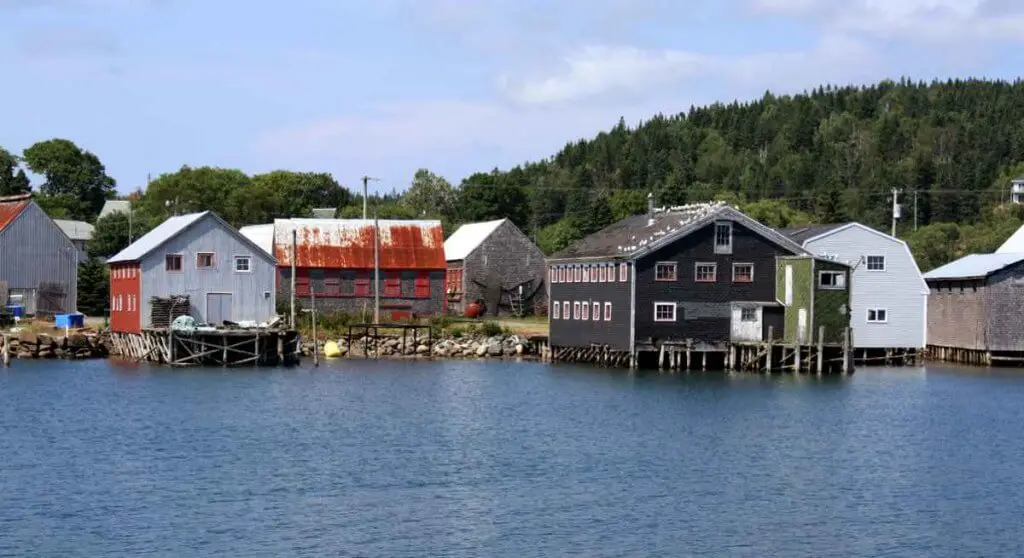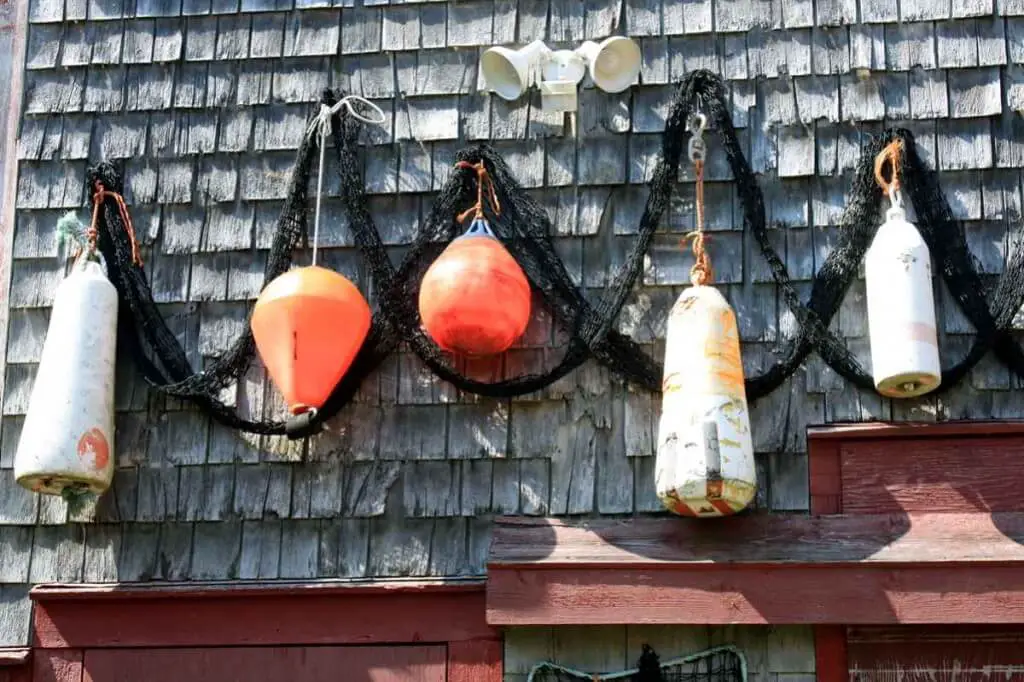Grand Manan Island New Brunswick - Island Life in the Bay of Fundy
The island of Grand Manan Island off the coast of New Brunswick is on the border between the Bay of Fundy and the Gulf of Maine. It is located away from the usual tourist routes and is therefore just a real insider tip. As soon as you leave the ferry that connects the island to Blacks Harbor on the mainland, you realize that the clocks are ticking differently here. The few cars that leave the ferry disappeared quickly, and then we have the main road - which is also the only road that crosses the island from north to south - convenient for us. Only now and then does we encounter another vehicle or a bicycle. The people of Grand Manan Island obviously do not know the hustle and bustle.
As soon as we arrive, we learn that the sea is in charge on this island. Actually we had planned to do a whale watching with the sailboat, but we have to learn that today the wind is too strong and the sea is too rough. Therefore, the boats stay in the harbor. White crests on the waves confirm this, and I'm glad to have more time exploring the island and not having to struggle with seasickness.

The Swallow Tail Lighthouse on Grand Manan Island
The Swallow Tail Lighthouse north of North Head watches over the harbor entrance and we watch the ferry return to the mainland. In the small bay Pettes Cove, which separates the lighthouse from the capital of the island, there are fish traps in which the islanders catch their fish. Small boats on the coast wait for calmer sea. Only when the waves are lower, their owners can drive out to catch their catch. On the other hand, we are happy about the cooling breeze, let the wind blow around our nose and walk on the narrow path over to the lighthouse, from where we have a wonderful view of the Bay of Fundy.

Lobster fishing on Grand Manan Island
Castalia shows that not only fish are prey to island fishermen. There we see numerous piled-up lobster cages in addition to fish lines. The modern metal wire lobster traps glow yellow and green. It's actually a shame that the old wooden traps that the fishermen made themselves during the winter months are disappearing, but the new cages are also built on the same principle: they consist of two areas - the "kitchen" and the "living room" , two compartments into which the lobsters are lured. Through a funnel-shaped net, the lobsters go into the "kitchen" while hunting for the bait laid out in the "living room" and into the "living room" through another funnel net. When they have reached the bait, they are trapped, because with their chunky scissors they are no longer able to leave the trap in the same way they came in.

Seal Cove is worth seeing
Especially beautiful is Seal Cove, a fishing village that has been around since the 19. Century has hardly changed. Time seems to be standing still here. Wooden fishing sheds stand on wooden posts in the water, on whose roofs dozens of gulls warm in the sun. On the paths between the buildings are bumblebees - modern and traditional - and on the walls a few children play with young cats. One of the buildings is set up as a kind of museum - you just go inside. Admission is not required. We see how one once smoked fish in such huts. Above our heads is a jumble of wooden poles, on which you hung the filleted fish halves. In the center of the building is still the hearth, from the thick smoke rose to make the fish halves durable.

The wooden pillars, on which the fishing sheds rise above the water, look fragile, and the windows are no longer all complete. This is a strange vehicle in the water, which looks like a slightly too big a bathtub, but - as our companion Darrell assures us - is quite seaworthy and was used for trips in the harbor bay.

On the shingle walls of the fishing sheds of Seal Cove fishing nets decoratively hang out to dry. Elsewhere we see buoys whose different colors are barely recognizable, but we learn that these color patterns were owned by certain fishing families. So they could see what their own lobster traps were attached to when they brought them up from the depths of the sea.

The southern tip of Grand Manan Island
At the southern tip of the island we get an impression of the up to 100 meter high cliffs, which extend along the entire west side of the island to the north. This is the reason why Grand Manan Island is populated mainly on its eastern side. The west coast does not provide easy access to the sea, and winds often bring stormy weather here. There is only one road that leads to the west coast to an algae cultivation plant and a small holiday village, which is mainly used by locals.
A visit to Grand Manan Island can be well planned on a journey through the Atlantic provinces of Canada. The ferry from Blacks Harbor to North Head is free and can not be reserved. The rule here is who comes first, drives first. Only on the return trip you have to pay. We recommend to buy the ticket right after arrival on the island and reserve a place for the ferry return.
Travel Arrangements:
Parking at the airport
Here you can reserve your parking space at the airport.
Arrival:
Arrival by plane, bus or train*. Air Canada, Condor and Icelandair fly from Germany to various airports in eastern Canada.
Car Rentals:
Cheap car hire - book quickly and easily!
Hotels:
Hotels on Grand Manan Island * not far from Cape Enrage you can book through our partner booking.com.
Do you already know:
- Buying a hiking backpack – what you should know before you buy it
- Ottawa Winterlude
- Ottawa Winterlude hotels
Slow Travel Tips here.
Sources: On-site research supported by Tourism New Brunswick and the Canadian Tourism Commission
Text: © Copyright Monika Fuchs, TravelWorldOnline
Photos: © Copyright Monika Fuchs, TravelWorldOnline
Video: © Copyright Petar Fuchs, TravelWorldOnline



